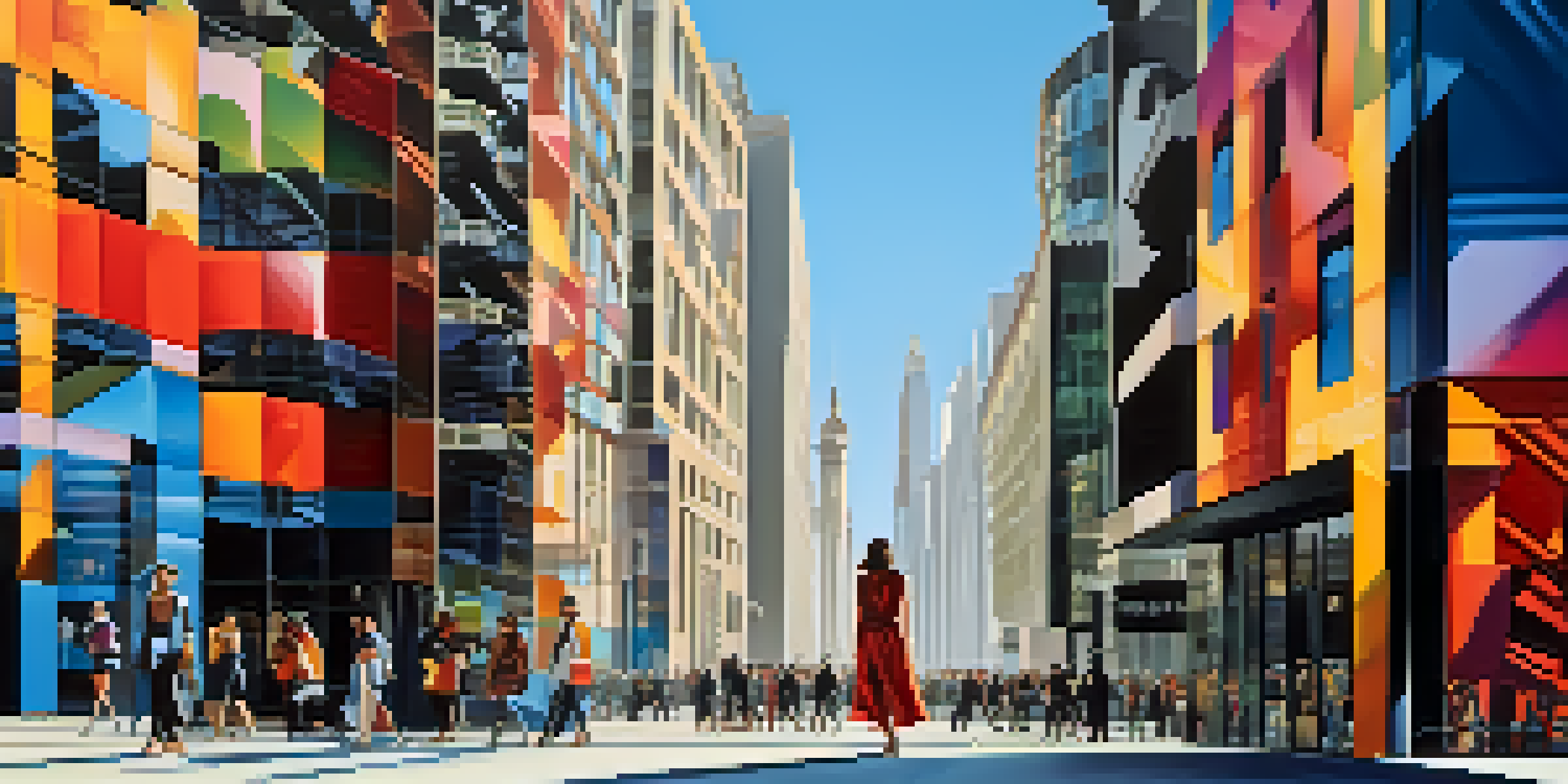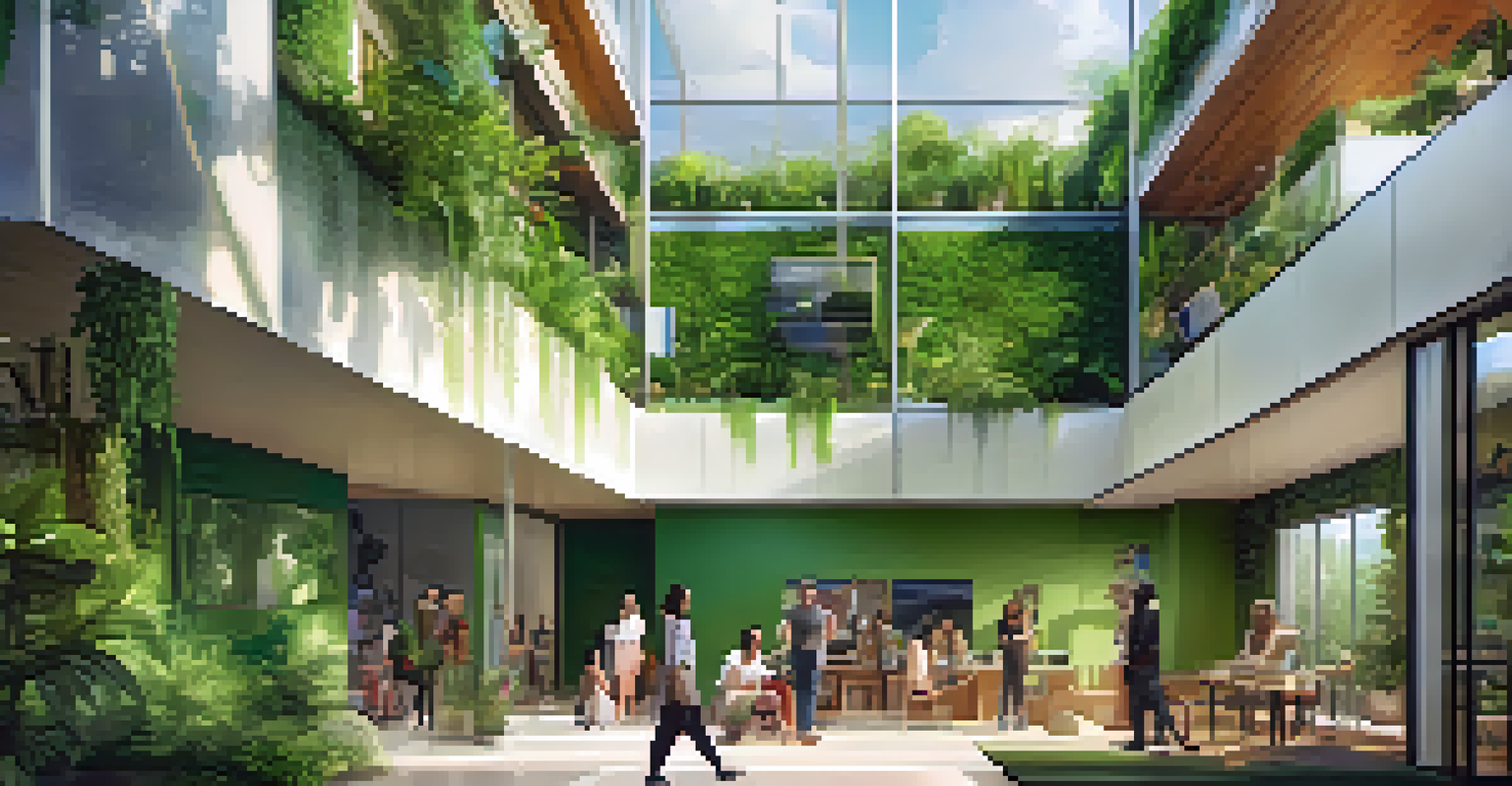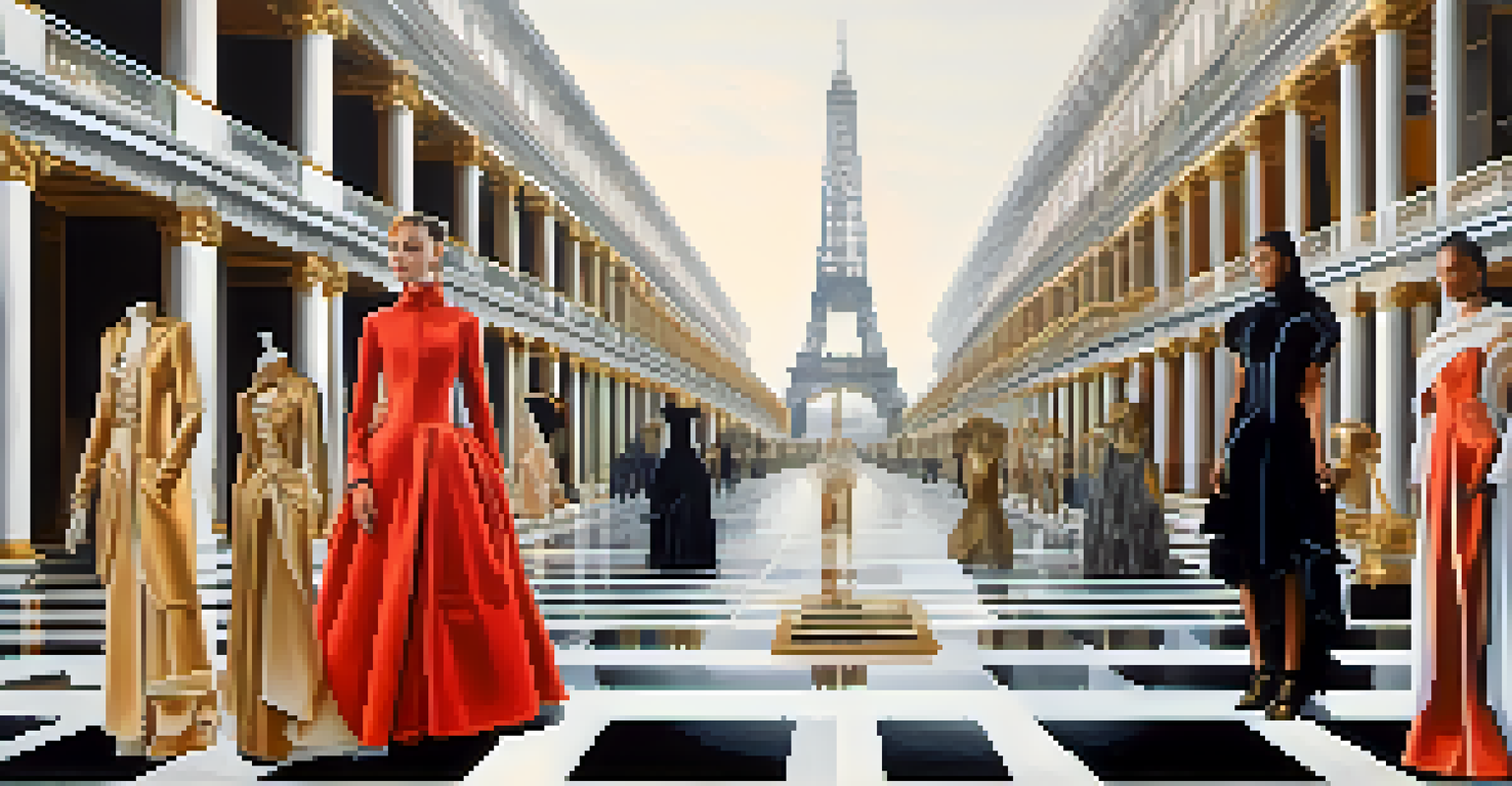The Evolution of Fashion and Architecture in Urban Spaces

Understanding the Interconnection of Fashion and Architecture
Fashion and architecture are two distinct yet intertwined forms of art. They both reflect cultural values, social norms, and individual expressions within urban spaces. Just as a well-designed building can influence the way we live, the clothing we wear can reflect the environment we inhabit. This relationship creates a dialogue between our personal style and the structures that surround us.
Fashion is the armor to survive the reality of everyday life.
For instance, consider how the sleek lines of modern architecture mirror the minimalist trends in fashion. Both aim for simplicity, functionality, and elegance, often leading to a cohesive aesthetic experience in cities. When we walk through urban areas, we can see how architectural styles inspire fashion trends, and vice versa, creating a rich tapestry of cultural expression.
As these two worlds evolve, they often challenge each other, leading to innovative designs and styles. This synergy not only shapes our visual landscape but also influences our behavior and interactions within urban spaces, making it vital to understand their connection.
Historical Perspectives: Fashion and Architecture's Journey
Historically, fashion and architecture have evolved together, reflecting the societal changes of their time. In the Renaissance, for example, grand buildings adorned with intricate details paralleled the opulent clothing styles of the era. Both served as symbols of wealth and status, showcasing the power dynamics at play in urban environments.

As we moved into the Industrial Revolution, there was a shift towards more functional designs in both fashion and architecture. The introduction of new materials and mass production transformed how people dressed and lived, with utilitarian designs becoming prominent. This period marked a significant change in how urban spaces were created and experienced.
Fashion and Architecture Intertwined
Both fashion and architecture reflect cultural values and influence urban experiences through their interconnected designs.
In contemporary times, we see a blend of historical influences and modern innovations. Designers and architects are now more likely to draw inspiration from the past while incorporating sustainable practices and technology. This ongoing dialogue between the two fields continues to shape the way we perceive and interact with our urban spaces.
The Impact of Urbanization on Fashion and Architecture
Urbanization has dramatically influenced both fashion and architecture, bringing about new trends and styles. As cities expand, so do the opportunities for creative expression, leading to a fusion of influences from different cultures. This melting pot of ideas helps shape the way urban environments look and feel, as well as how we dress within them.
Architecture is the learned game, correct and magnificent, of forms assembled in the light.
In bustling metropolises, we often see street fashion emerging as a direct response to the architectural landscape. For example, the vibrant street art in cities like Berlin reflects the creativity of its inhabitants and often aligns with the edgy fashion trends found in the area. This interplay makes urban spaces dynamic and ever-evolving.
Moreover, urbanization has encouraged designers and architects to prioritize functionality and sustainability. As cities face challenges like overcrowding and pollution, both fields are responding with innovative solutions that promote a better quality of life, illustrating their ongoing evolution in the face of modern challenges.
Sustainability: A Shared Focus for Fashion and Architecture
In recent years, sustainability has become a crucial theme in both fashion and architecture. As awareness of environmental issues grows, designers and architects are seeking eco-friendly materials and practices to minimize their impact. This shift reflects a broader societal trend towards responsible consumption and living.
For instance, many fashion brands are now employing sustainable fabrics and manufacturing processes, while architects are increasingly designing energy-efficient buildings. This alignment shows that both industries are recognizing their roles in fostering a healthier planet. Urban spaces are benefiting from these innovations, as more green buildings and sustainable fashion initiatives emerge.
Sustainability Drives Innovation
As environmental awareness grows, both industries are adopting sustainable practices to create a healthier urban environment.
The collaboration between these fields is essential for creating a sustainable future. By working together, fashion designers and architects can create urban environments that not only look good but also promote well-being and environmental stewardship. This synergy is vital as we look toward a more sustainable urban future.
The Role of Technology in Shaping Fashion and Architecture
Technology plays a significant role in the evolution of both fashion and architecture, transforming how they are created and experienced. From 3D printing in fashion design to smart building technologies, advancements are reshaping the landscape of urban spaces. These innovations allow for greater creativity and efficiency, paving the way for futuristic designs.
In fashion, technology has enabled designers to experiment with new materials and techniques, leading to unique and innovative clothing lines. Wearable technology, for example, is merging fashion with functionality, allowing for a seamless integration of style and practicality. This trend is becoming increasingly popular in urban settings, where convenience is key.
Similarly, architecture has embraced technology, leading to the rise of smart cities that enhance the urban experience. Innovations like automated systems and sustainable building practices are transforming how we interact with our environment. As we move forward, the interplay of fashion and technology will continue to redefine urban landscapes, making them more dynamic and responsive.
Cultural Influences on Fashion and Architectural Design
Cultural influences play a significant role in shaping both fashion and architecture, resulting in unique urban identities. Each city has its distinct style, influenced by its history, geography, and the people who inhabit it. For instance, the vibrant colors and intricate patterns of Moroccan architecture can be seen mirrored in the traditional clothing of the region, creating a harmonious cultural expression.
As globalization continues to blur cultural boundaries, we see an exchange of ideas that enrich both fashion and architecture. Designers often draw inspiration from various cultures, leading to eclectic styles that reflect a diverse urban experience. This cross-pollination creates a rich tapestry of influences that contribute to a city's identity.
Cultural Influences Shape Design
Cultural heritage significantly impacts the styles of fashion and architecture, enriching urban identities through diverse influences.
Moreover, local traditions are being preserved and celebrated through contemporary design. Architects and fashion designers are increasingly paying homage to their cultural roots, integrating traditional elements into modern designs. This respect for heritage helps maintain a sense of place within urban spaces, ensuring that they remain vibrant and relevant.
The Future of Fashion and Architecture in Urban Spaces
As we look to the future, the relationship between fashion and architecture will likely continue to evolve in exciting ways. With the rise of remote work and changing lifestyle preferences, urban spaces may adapt to reflect these shifts. This evolution could lead to new architectural designs that prioritize community interaction and flexibility.
Fashion is also expected to adapt, reflecting these changes in urban living. As more people seek comfort and sustainability, we might see a blend of stylish yet functional clothing that suits the modern lifestyle. This shift could redefine what urban fashion looks like, emphasizing practicality without sacrificing style.

Ultimately, the future of fashion and architecture will be shaped by our collective values and aspirations. By embracing innovation, sustainability, and cultural diversity, we can create urban spaces that are not only beautiful but also functional and inclusive. This ongoing dialogue between the two fields will continue to enrich our experiences in the cities we inhabit.